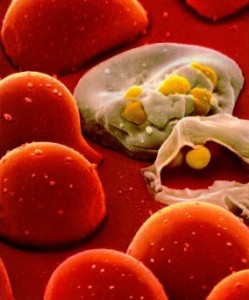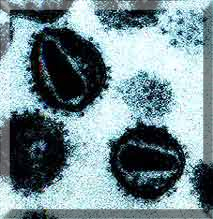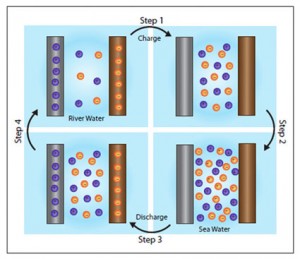
The HIV virus can survive in two places in the body; inside cells or free floating in the blood.Inside a cell, the HIV virus has two options it could begin making copies of itself using the cells own DNA xerox machine, once enough copies are made the new viruses can break out of the cell and go on to infect other cells in the body. Other times the virus may simply hide out in the cell in a dormant phase. This dormant phase is what makes antiretroviral medication less than 100% effective. The medication can only target the free viruses and the ones that are making copies. The ones that are hiding could become active later on with out any warning.
See podcast for more on dormant cells.
Audio clip: Adobe Flash Player (version 9 or above) is required to play this audio clip. Download the latest version here. You also need to have JavaScript enabled in your browser.
 The unpredictable activation of dormant cells led to some unique research by mathematicians at the University of British Columbia. They have used a mathematical model to track and predict how virus levels change in a patient when the dormant cells wake up. The research shows that these cells don’t wake up because of a trigger (like failing drug treatment) but are due to random activations.
The unpredictable activation of dormant cells led to some unique research by mathematicians at the University of British Columbia. They have used a mathematical model to track and predict how virus levels change in a patient when the dormant cells wake up. The research shows that these cells don’t wake up because of a trigger (like failing drug treatment) but are due to random activations.
See Video for more on the mathematical model.
https://www.youtube.com/watch?v=xMulji8omcA&hd=1
HIV can be detected through the screening of the blood. HIV infection occurs by the transfer of bodily fluids such as breast milk, blood, semen, vaginal fluid and pre-ejaculate. The most common routes of transmission of the infection is through unprotected sex, contaminated needles, breast milk and transmission from an infected mother to her child at birth.
- direct viral killing of infected cells
- increased suicide rates in infected cells (most cells in our body are programmed to self destruct when they get old)
- killing of infected CD4+ T cells by CD8 cytotoxic lymphocytes that recognize infected cells. These are like cops that hunt down the infected cells.

When the level of CD4+ T cells declines to a critical level, the protection provided by white blood cells is lost, and the body becomes more susceptible to infections. This is commonly known as AIDS.








